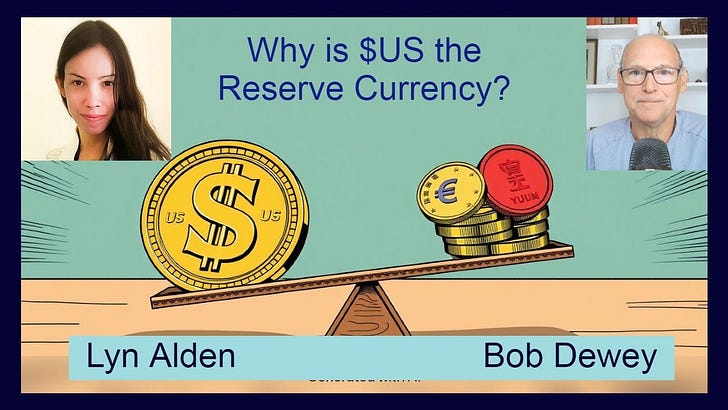What Is A Reserve Currency? Benefits, Risks, A Bad Ending?
In clip from my conversation with Lyn Alden last month, she discusses the significance of the US dollar as the world's reserve currency, exploring the factors that have contributed to its enduring status and the potential challenges it faces in the future. She highlights the network effects that reinforce the dollar's dominance, the implications of rising debt, and the evolving landscape towards a multipolar reserve system.
Thank you my my sponsor Truflation. Learn more at www.truflation.com.
Takeaways
The dollar's reserve status is likely to wane over time but not in the near-medium term.
The dollar is the primary reserve currency due to network effects and more.
Reserve currencies rely on deep capital markets and liquidity.
The dollar's status is likely to wane over time but lasts longer than - expected.
Historical reserve currencies have lasted around 80-90 years.
The dollar is the first true reserve currency, not tied to gold.
Debt creates inflexible demand for the dollar globally.
The dollar's value is propped up by its reserve currency status.
Rising debt and deficits challenge the sustainability of the dollar.
Censorship and asset seizure concerns may drive diversification away from the dollar.
The world is shifting towards a multipolar reserve asset system.

